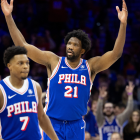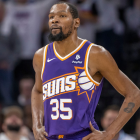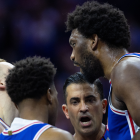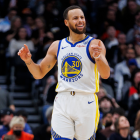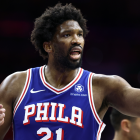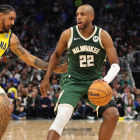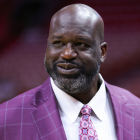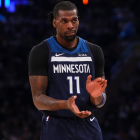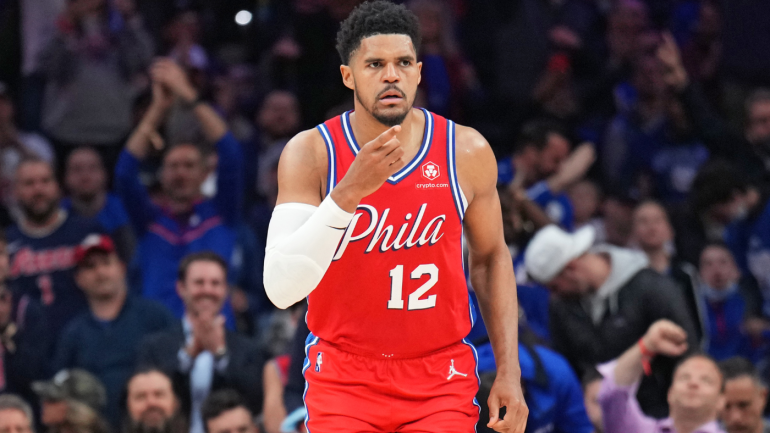
Tobias Harris' role -- and position -- with the Philadelphia 76ers has fluctuated since the team initially traded for him from the Los Angeles Clippers in February 2019. When Harris first came to Philadelphia, he joined a starting five that already consisted of Joel Embiid, Ben Simmons, Jimmy Butler and J.J. Redick. In that group, Harris served as the de facto small forward and was typically tasked with guarding the opponents' player at that position. He was looked at as the team's third, or potentially even fourth option on offense behind Embiid, Butler and sometimes Simmons.
In the three full seasons since, Harris' role has been anything but consistent. The following summer, the Sixers completely retooled. They lost Butler and Redick in free agency, and replaced them with Al Horford and Josh Richardson in the first five. For Harris, this meant that he would remain at the small forward spot, and also that he would be leaned on more heavily for production on the offensive end in Butler's absence.
When this version of the Sixers flamed out in the first round of the playoffs, the roster was reshaped again. Horford was traded for Danny Green, and the team also landed Seth Curry via trade from the Dallas Mavericks. With this new iteration of the Sixers starters, Harris shifted up to the power forward spot, where he spent the bulk of the past two seasons.
Now, following Philadelphia's offseason addition of P.J. Tucker, it looks like Harris will again shift back to small forward. Luckily, he's accustomed to adjusting at this point. Plus, he doesn't see much of a difference between the two forward spots in today's NBA.
"Doc [Rivers] says the three and the four are pretty identical," Harris said at Philadelphia's media day this week. "Probably the only adjustment would be who you're guarding defensively. Last year, I was guarding twos, threes, fours. So, I don't think it's that much of an adjustment, to be honest. They're identical positions.
"When I played in L.A., myself and [Danilo] Gallinari were the three, four and we never really labeled ourselves as three or four, it was just forwards," Harris added. "So I think that's kind of the same adjustment here. Obviously, you'll see what positions we're in offensively as a group, but in terms of playing the three or the four, they're pretty identical, to be honest."
In addition to switching his literal position, Harris is also going to have to recalibrate his role while playing alongside three productive, ball-dominant players in Embiid, James Harden and Tyrese Maxey. With that lineup, Harris isn't going to get too many plays called specifically for him. Instead, he's going to have to get more comfortable as an off-ball, catch-and-shoot type of player.
For Harris, that transition began in earnest midway through last season when the Sixers acquired Harden from Brooklyn at the trade deadline. Prior to the All-Star break last season, Harris attempted 3.4 shots per game from long range. That number rose to 4.6 after the break.
"It was an adjustment for me because it was the first time in my career that I've been in those positions as kind of a catch-and-shoot player off the ball," Harris said of the change. "But after a couple of games and once I made a few adjustments shooting wise, and with the preparation, it all came together for me. I was able to have some very good games all throughout after the All-Star break. So, I do look to follow that up this season."
In addition to taking more shots from long range, Harris also converted those shots at a higher percentage after the All-Star break (39 percent after the break compared to 35 percent before) -- an improvement he credited to learning to be quicker on the draw, and one that he hopes to carry over into the coming campaign.
"The biggest adjustment was letting it fly and not worrying about the result," Harris said. "Shooting it quicker and shooting from different spots and letting it go. So, I do look to let them go even more this year in different situations on the floor. I just think it opens up the floor for everyone else. If I'm in those positions to receive the basketball, I have to let it go to space the floor the best way for the group."
At media day, Maxey spoke about how this season was a "we" season, not a "me" season for both him and the team, and Harris' willingness to adapt his game for the betterment of the team is a manifestation of that. If everyone else on the roster follows his lead when it comes to buy-in, the Sixers have a chance to be something special. That isn't lost on coach Doc Rivers.
"I thought it started the last couple months of the season. It's almost like he had a self look at our team and he led through the buy-in. I'm going buy in. I'm going to be a star in my role. I'm going to teach all the other players that you have to make some sacrifices if you want to win," Rivers said of Harris. "Coming into this year, he probably has to lead the team in that again. He just put himself in a great mental place for our team, and a great leadership place for our team. From a coach, it was great to see, and now he has to do it again."
For the Sixers to reach their full potential this season, Harris will need to accept -- and thrive -- in his adjusted role. Luckily for Philadelphia, he's ready and willing to embrace it.














